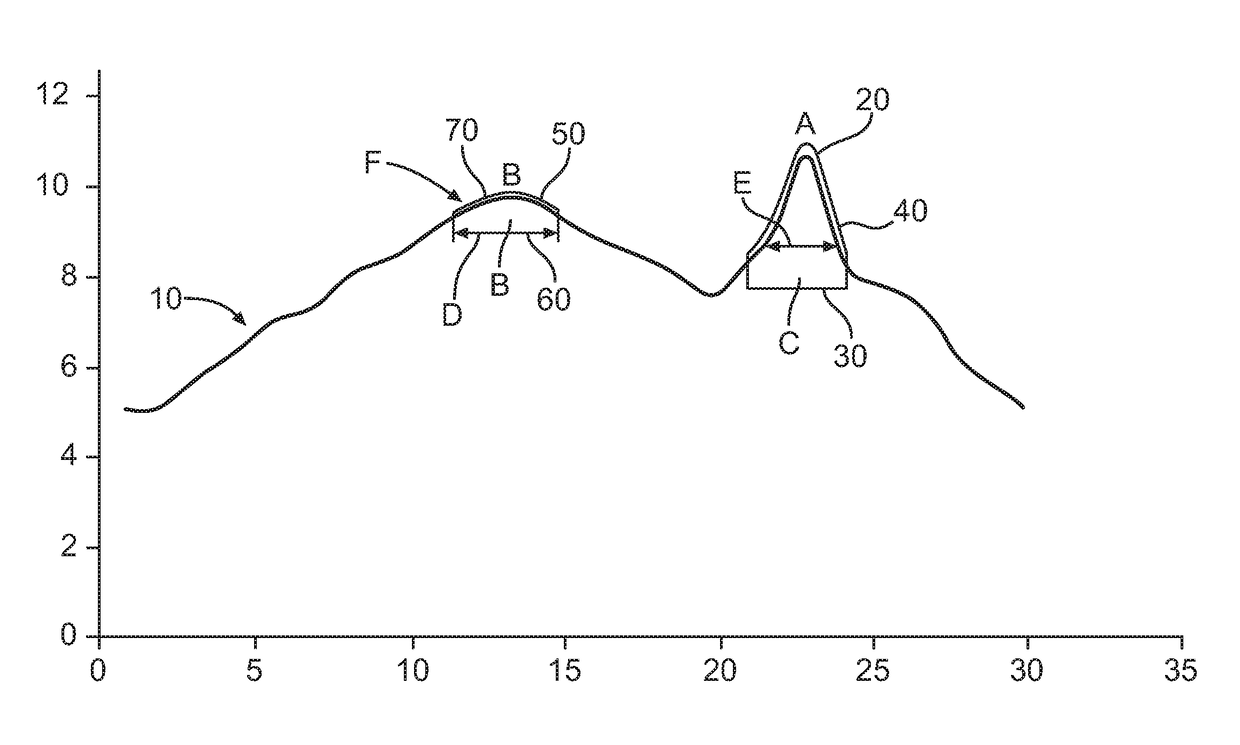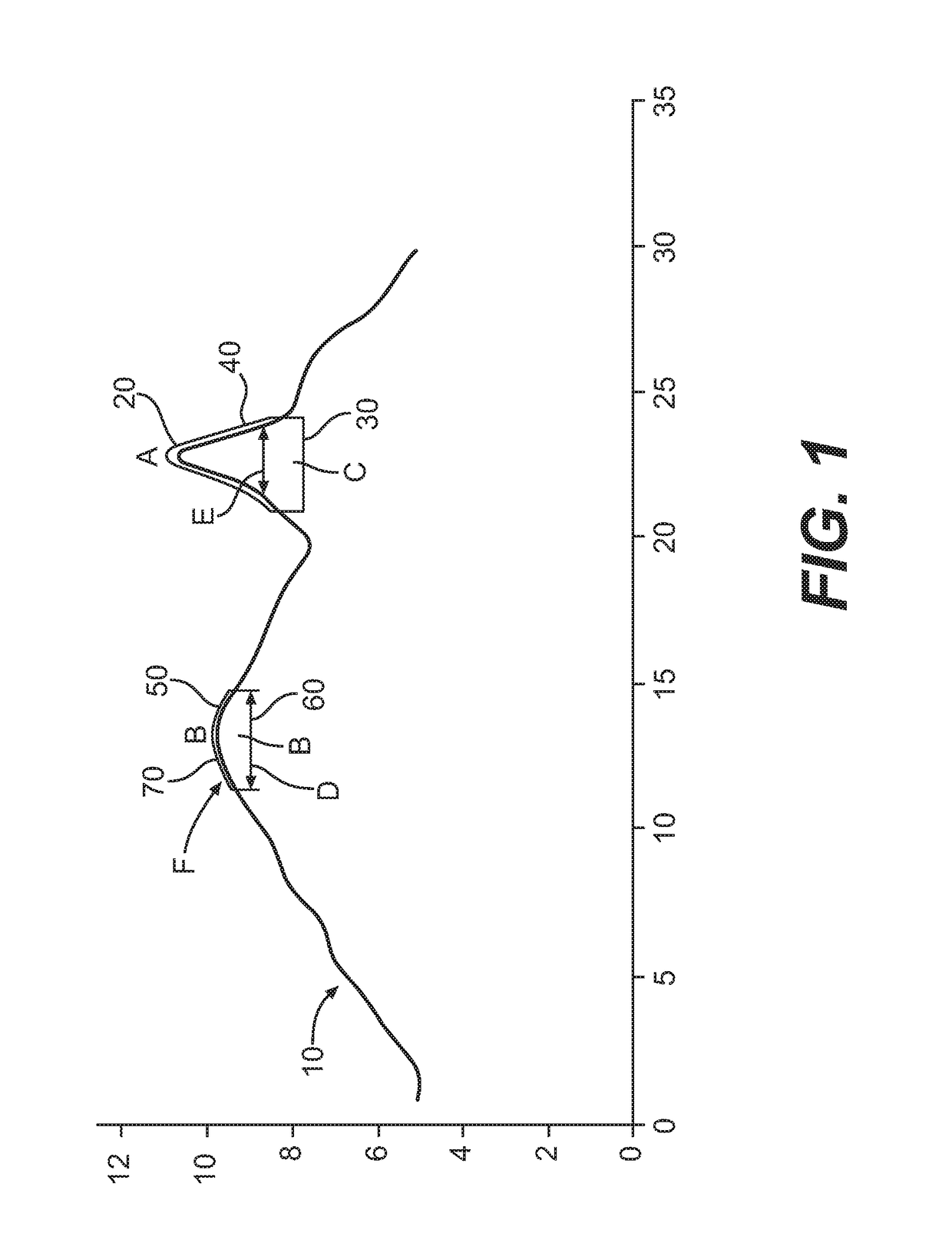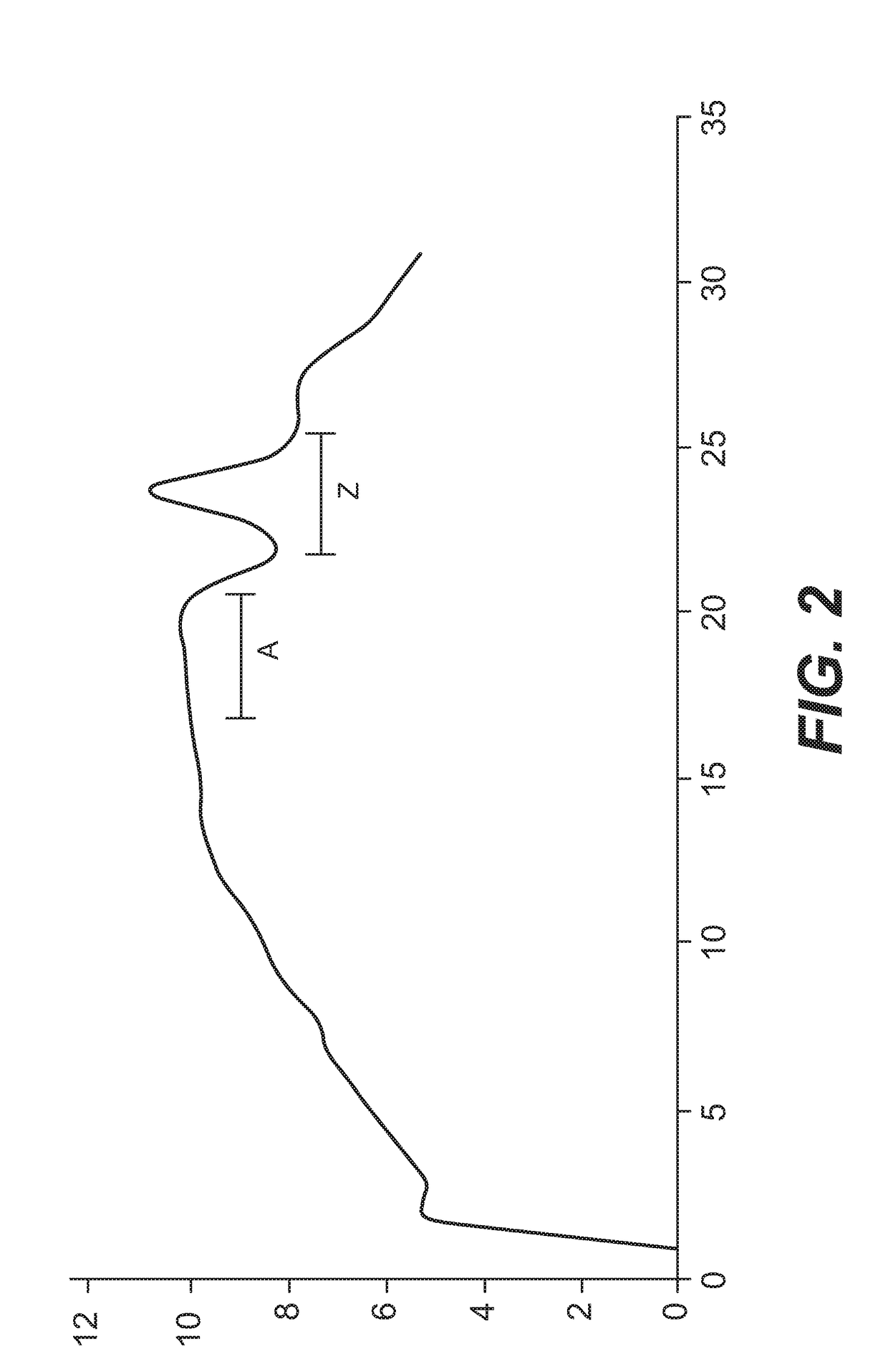Machine Learning and Robust Automatic Control of Complex Systems with Stochastic Factors
a complex system and stochastic factor technology, applied in the field of machine learning and robust automatic control of complex systems with stochastic factors, can solve problems such as good, but not necessarily provably optimal, path through, and achieve “good enough” solutions much faster and inexpensively, and easy computation. easy, easy to repeat
- Summary
- Abstract
- Description
- Claims
- Application Information
AI Technical Summary
Benefits of technology
Problems solved by technology
Method used
Image
Examples
Embodiment Construction
[0030]FIG. 1 displays a graph 10 of a representative relationship between a performance metric and the possible values of one control factor. The maximum of the performance metric is at point A, item 20 in the drawing, but the uncertainty of setting the control factor implies that the actual setting is represented by bracket C, item 30. This in turn causes the actual performance metric to fall somewhere along section E, item 40, of the graph. The method of the present invention selects bracket D, item 60 in the drawing, to set the control factor near point B, item 50, of the graph. This yields performance somewhere in Section F, item 70, of the graph. Hence this method does not attain the maximum possible value of the performance metric but does produce a higher expected value of the performance metric than bracket C.
[0031]It is readily apparent that the same logic applies to a multi-dimensional representation of a system with several control factors, or to finding a set of such bra...
PUM
 Login to View More
Login to View More Abstract
Description
Claims
Application Information
 Login to View More
Login to View More - R&D
- Intellectual Property
- Life Sciences
- Materials
- Tech Scout
- Unparalleled Data Quality
- Higher Quality Content
- 60% Fewer Hallucinations
Browse by: Latest US Patents, China's latest patents, Technical Efficacy Thesaurus, Application Domain, Technology Topic, Popular Technical Reports.
© 2025 PatSnap. All rights reserved.Legal|Privacy policy|Modern Slavery Act Transparency Statement|Sitemap|About US| Contact US: help@patsnap.com



